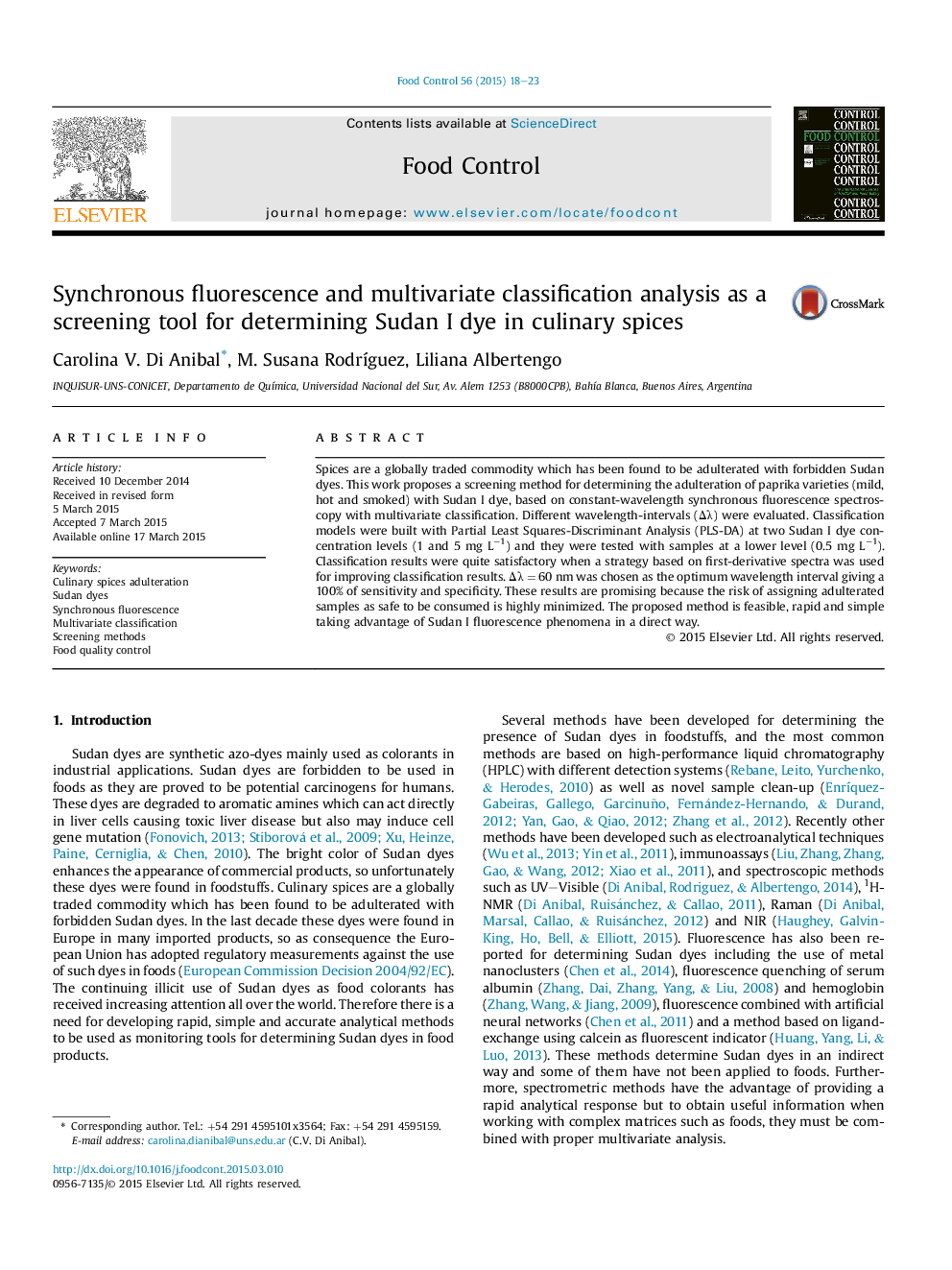| Article ID | Journal | Published Year | Pages | File Type |
|---|---|---|---|---|
| 4559211 | Food Control | 2015 | 6 Pages |
•A screening method for determining food adulteration with Sudan I dye is presented.•Synchronous fluorescence spectroscopy with multivariate classification was used.•First-derivative spectra improved classification results.•Lower adulterant levels could be determined.
Spices are a globally traded commodity which has been found to be adulterated with forbidden Sudan dyes. This work proposes a screening method for determining the adulteration of paprika varieties (mild, hot and smoked) with Sudan I dye, based on constant-wavelength synchronous fluorescence spectroscopy with multivariate classification. Different wavelength-intervals (Δλ) were evaluated. Classification models were built with Partial Least Squares-Discriminant Analysis (PLS-DA) at two Sudan I dye concentration levels (1 and 5 mg L−1) and they were tested with samples at a lower level (0.5 mg L−1). Classification results were quite satisfactory when a strategy based on first-derivative spectra was used for improving classification results. Δλ = 60 nm was chosen as the optimum wavelength interval giving a 100% of sensitivity and specificity. These results are promising because the risk of assigning adulterated samples as safe to be consumed is highly minimized. The proposed method is feasible, rapid and simple taking advantage of Sudan I fluorescence phenomena in a direct way.
